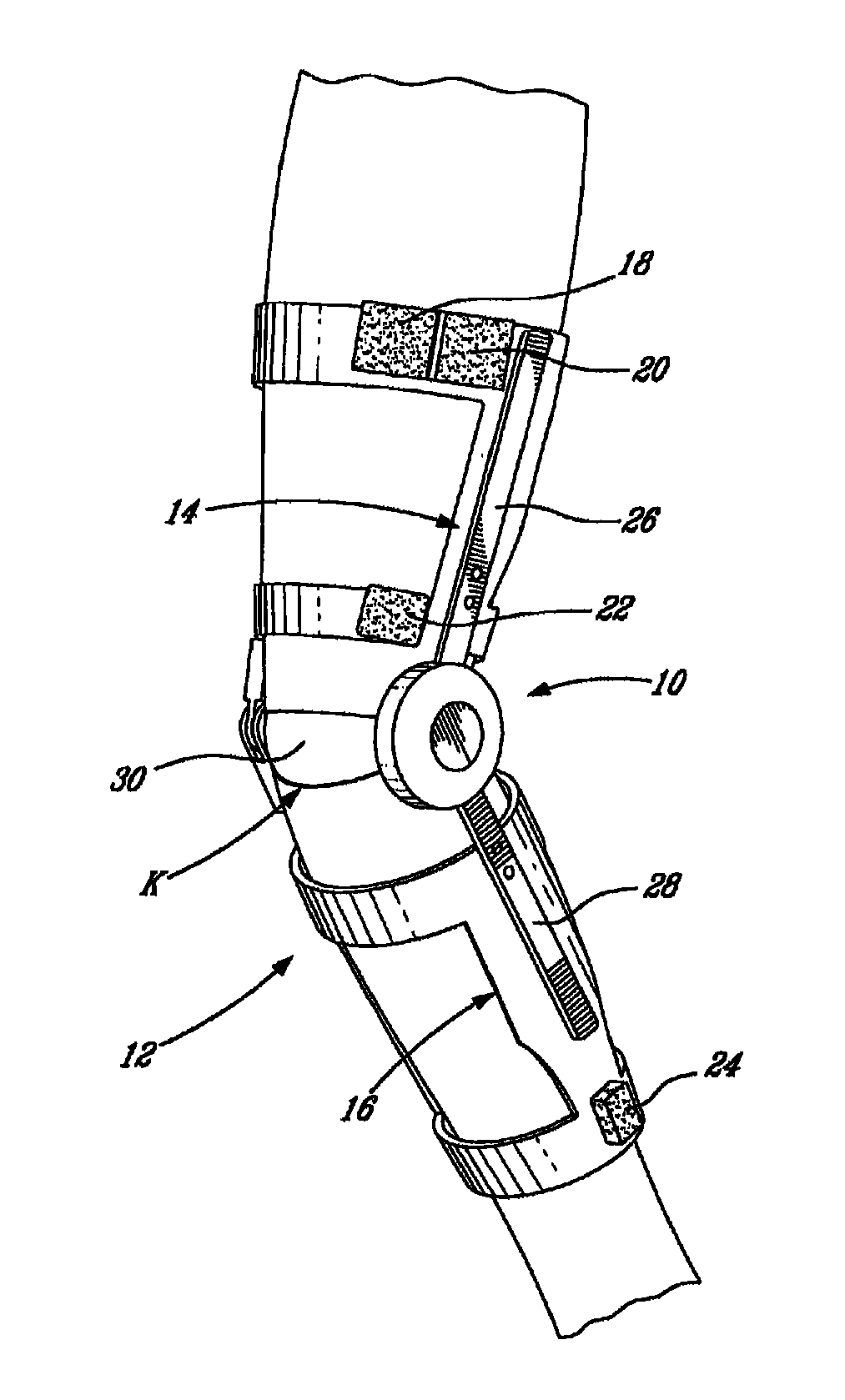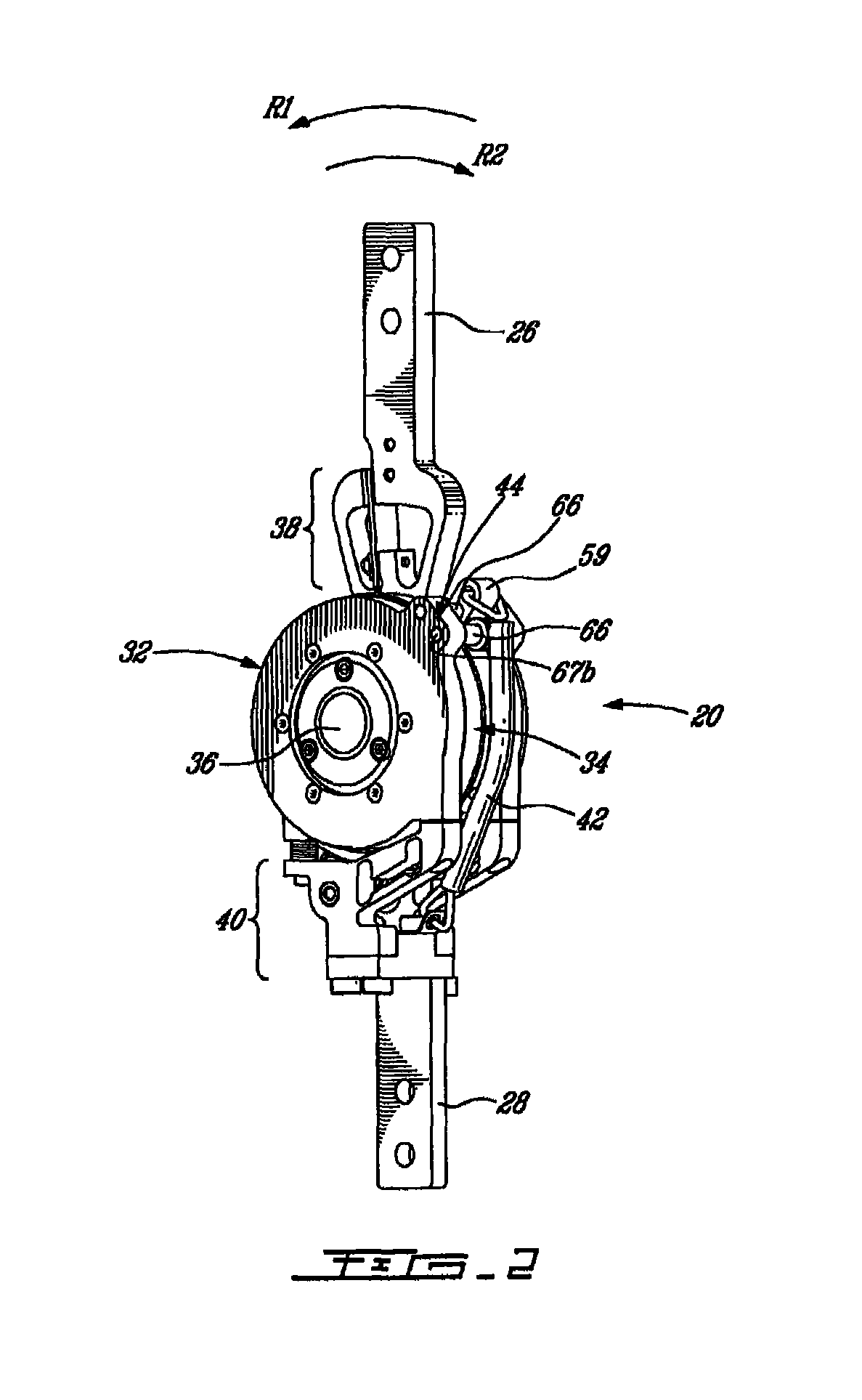High torque active mechanism for orthotic and/or prosthetic devices
a high-torque active mechanism and orthotic technology, applied in non-surgical orthopedic devices, measurement devices, work measurement, etc., can solve the problems of not being able to use the joint does not help restore the natural dynamics of a healthy leg, and none of the commonly available orthotic knee joints can be used. , to achieve the effect of increasing the torque density during braking
- Summary
- Abstract
- Description
- Claims
- Application Information
AI Technical Summary
Benefits of technology
Problems solved by technology
Method used
Image
Examples
Embodiment Construction
[0040]Generally stated, the present invention provides an orthotic / prosthetic device comprising at least one device portion (an orthotic portion or a prosthetic portion), a joint portion for providing for the at least one device portion to pivot between flexion and extension movements relative to another adjacent device portion or an adjacent limb segment of the user. A primary brake is in operational communication with the joint portion for generating a braking force thereon during flexion and / or extension movements. An additional frictional brake is in operational communication with both the primary brake and the joint portion. During flexion the primary brake causes the additional frictional brake to generate an additional frictional braking force on the joint portion.
[0041]Generally stated, a non-limitative illustrative embodiment of the present invention provides high torque active mechanism for an orthotic and / or prosthetic joint using a magnetorheological (MR) rotational damp...
PUM
 Login to View More
Login to View More Abstract
Description
Claims
Application Information
 Login to View More
Login to View More - R&D
- Intellectual Property
- Life Sciences
- Materials
- Tech Scout
- Unparalleled Data Quality
- Higher Quality Content
- 60% Fewer Hallucinations
Browse by: Latest US Patents, China's latest patents, Technical Efficacy Thesaurus, Application Domain, Technology Topic, Popular Technical Reports.
© 2025 PatSnap. All rights reserved.Legal|Privacy policy|Modern Slavery Act Transparency Statement|Sitemap|About US| Contact US: help@patsnap.com



